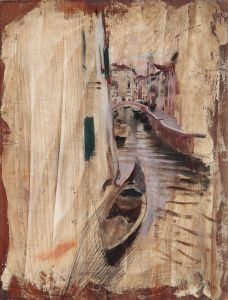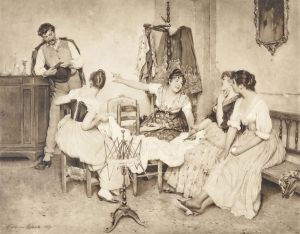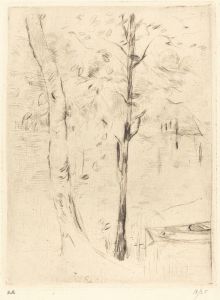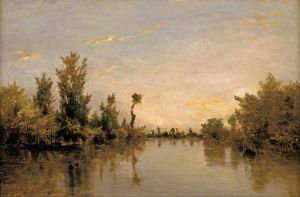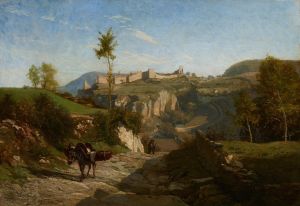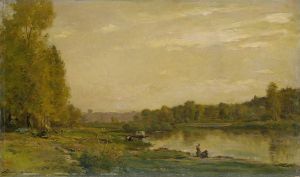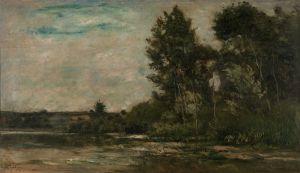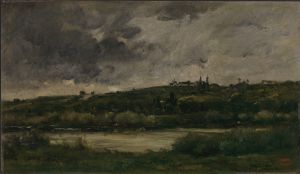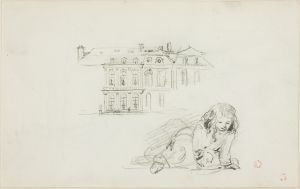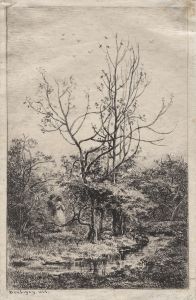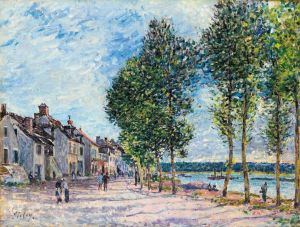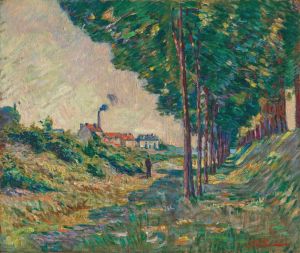
The Painter’s Barge at the Ile de Vaux on the Oise River
A hand-painted replica of Charles François Daubigny’s masterpiece The Painter’s Barge at the Ile de Vaux on the Oise River, meticulously crafted by professional artists to capture the true essence of the original. Each piece is created with museum-quality canvas and rare mineral pigments, carefully painted by experienced artists with delicate brushstrokes and rich, layered colors to perfectly recreate the texture of the original artwork. Unlike machine-printed reproductions, this hand-painted version brings the painting to life, infused with the artist’s emotions and skill in every stroke. Whether for personal collection or home decoration, it instantly elevates the artistic atmosphere of any space.
Charles François Daubigny was a prominent French landscape painter associated with the Barbizon School, a group of artists who moved away from the formalism of academic art and embraced naturalism, painting en plein air. One of Daubigny's notable works is "The Painter’s Barge at the Ile de Vaux on the Oise River," which exemplifies his innovative approach to landscape painting and his fascination with river scenes.
Daubigny was born in Paris in 1817 and developed an early interest in art, influenced by his father, who was also a painter. He became known for his depictions of rural France, particularly the serene and picturesque landscapes along the rivers Oise and Seine. His work is characterized by a loose, fluid style and a keen observation of light and atmosphere, which would later influence the Impressionists.
"The Painter’s Barge at the Ile de Vaux on the Oise River" reflects Daubigny's unique method of painting from a boat, which he called "Le Botin." This floating studio allowed him to capture the changing effects of light and weather on the water and surrounding landscape with immediacy and authenticity. The painting likely depicts a tranquil scene along the Oise River, a location Daubigny frequented and painted extensively. The Ile de Vaux, a small island in the river, provided a picturesque setting that Daubigny rendered with his characteristic sensitivity to the nuances of natural light and color.
Daubigny's technique involved using broad, sweeping brushstrokes and a palette that captured the subtle variations in the natural environment. His approach was less concerned with meticulous detail and more focused on conveying the overall mood and atmosphere of the scene. This method was a departure from the more polished and detailed landscapes that were popular at the time, marking a shift towards a more modern, impressionistic style.
The painting is a testament to Daubigny's pioneering spirit and his contribution to the development of landscape painting in the 19th century. His work laid the groundwork for the Impressionists, who admired his ability to capture the fleeting effects of light and his dedication to painting outdoors. Artists like Claude Monet and Camille Pissarro were influenced by Daubigny's techniques and subject matter, and they continued to explore and expand upon his ideas in their own work.
Daubigny's legacy is evident in the way he transformed landscape painting, moving it away from idealized representations and towards a more direct and personal engagement with nature. "The Painter’s Barge at the Ile de Vaux on the Oise River" is a prime example of his innovative approach and his enduring impact on the art world. Through his work, Daubigny not only captured the beauty of the French countryside but also paved the way for future generations of artists to explore new ways of seeing and representing the world around them.





